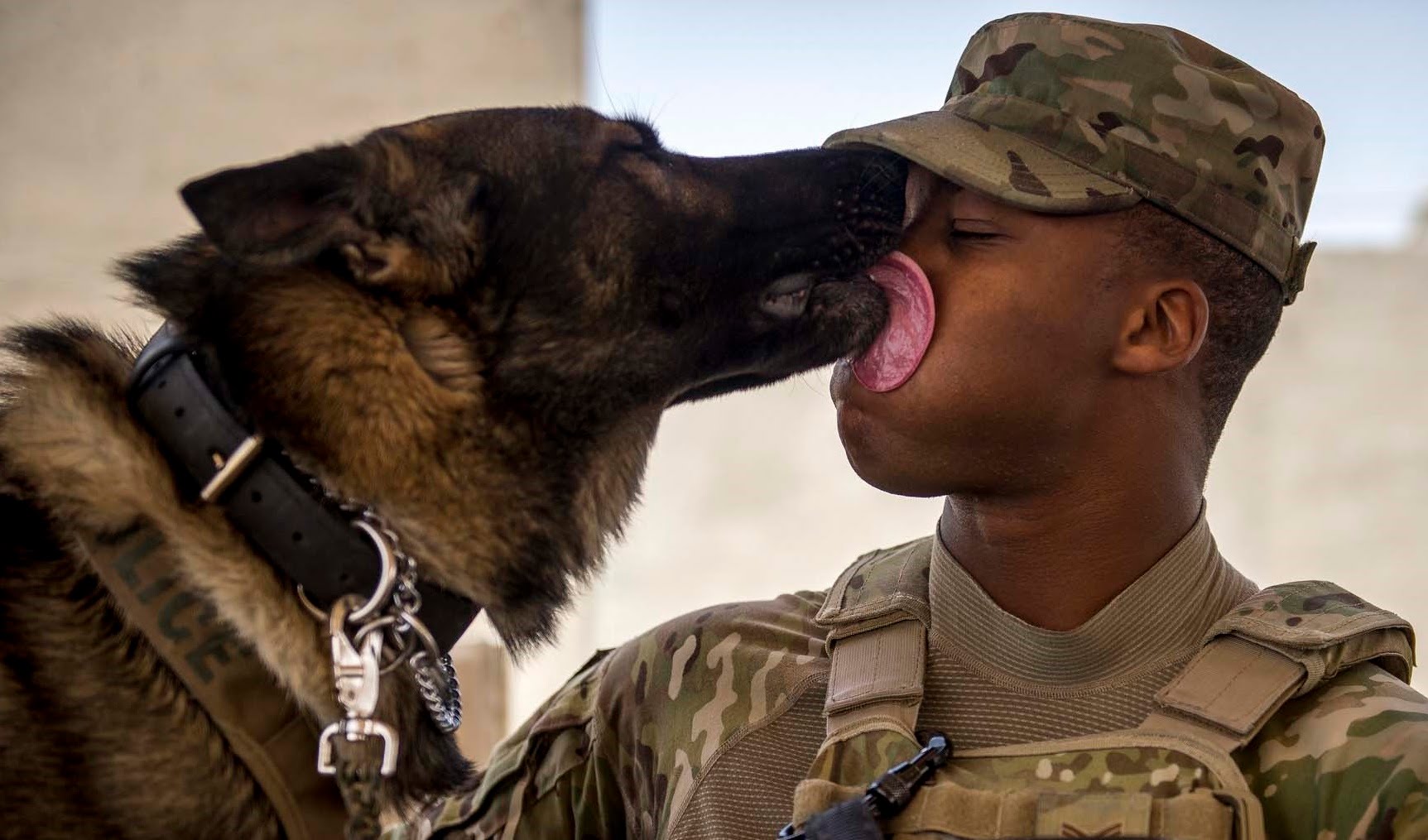Genghis Khan's Guide To labrador Retriever Coat Colors Excellence

In this article further down you might get a bunch of decent information pertaining to Dogs.
Solve Your Puzzle Thanks To These Tips Related To Dogs
They say all dogs go to heaven, but that can be hard to believe when your pooch is acting out. If you're having trouble with your dog, you may be frustrated, and you may not know where to turn. The suggestions in this article will help you deal with your dog and appreciate its finer points.
Hugging is okay but kissing should be avoided. Kisses from dogs are adorable, but they're a lot less cute when you realize how filthy your dog's mouth actually is. Dogs rummage through trash, drink toilet water and lick other dog's body parts. Keep in labrador retriever coat colors that an animal's mouth is full of germs. It is not necessarily true.
Never bring your dog with you while flying during the hot summer months, unless the airline provides a climate-controlled cabin for him. Most of the major carriers use the same area for pets as they do for cargo, meaning your dog will have to endure some pretty high temperatures as you travel to your destination, jeopardizing his safety.
Your pet needs vaccinations, much in the same way that your baby does. Some common vaccinations that dogs require include rabies, hepatitis and distemper. Each pet is different, and each will have a different immunization schedule. Your veterinarian is a great resource when it comes to which vaccinations are right for the age and breed of your pet.
Make sure that your dog receives plenty of exercise. Dogs need physical activity and play time; it's good for their physical and mental health. Throw a ball around the park with your dog and play fetch. This doesn't just entertain and exercise your dog, it helps you form a bond.
Use hand signals when training your dog along with verbal commands. Signals like these help your dog learn things quickly. Give both methods a try to find out which works best for your particular pup.
Know your dog's behavior and body rhythms well, to keep him at his healthiest. Medical issues often present themselves in slight nuances early on and if you know your dog, you'll see them. Pay attention to input and output, sleep duration, energy levels and so forth to keep on top of important issues that affect his health.
If you are training your dog, make sure the treat you are giving him really is desirable. Pets have preferences too, and if your dog does not like the treat you are providing, there is not going to be much motivation to do the right thing. Try out a few different brands, and remember that soft, chewy treats are generally the most well-received.
Be prepared for natural disasters that also impact your dog. Have an emergency supply of water and food for him and know in advance if your local shelter for people will allow pets inside. Too many pets are injured or lost following storms, floods and other situations that cause chaos in a community.
When you own a dog, you typically understand the general costs of ownership, such as food, vet visits, and grooming. A generally overlooked cost is emergency situations. Although it may not happen frequently, you should have a bit of money set aside for any emergency that may arise. It's better to be prepared for an emergency vet visit than to wonder how you are going to pay for it.
If you bathe your dog often, watch out for signs of painful earaches that can be problematic for canines. They can happen when too much water gets into the ears. Use cotton balls dabbed in baby oil while giving him a bath, and that should keep water from getting in, even if he splashes around.
Before you head out for a day of fun in the sun with your dog, dab a little sunblock on him! Dogs can get very serious burns on their noses and the inside of their ears, so include him in your sun-protection regimen. Just make sure there's no zinc or PABA in the product you use.
Timing is key when bringing your dog home. Try to introduce him to his new home over the weekend or when you have a couple of days off. Take the time to get to know one other - this will make him feel much more comfortable when he has to spend time in the home alone. Also, if you have children, make sure that they don't overwhelm him at first. If you have other pets in the house, be extra cautious when introducing the new arrival.
If you are training your dog to not pull when on the leash, you should invest in a quality collar and leash. If you have a larger dog, the force of it pulling might be able to break basic collars and leashes. For this reason a good, strong collar is recommended when you are walking your pup.
Does your dog chew a lot? This could be a sign that your dog is bored or anxious. You need to provide your dog with some toys that can be chewed and perhaps leave a shirt with your smell near your dog to avoid separation anxiety, especially if your dog is very young.
Crate training a puppy is a good idea if you're going to be gone all day and will have nobody there to watch your pet for you. Doing this can prevent your items from being damaged and keep the dog from using the bathroom inside the home.
Never give your dog away for free, no matter how desperate you might feel to get rid of it quickly. Even if you can not care for the animal, it is still your responsibility to be sure that it will have a good life to come. Instead, take the time to investigate the person that you will give it to and charge a re-homing fee to ensure that they are serious about caring for the animal.
Consider your daily routines, and decide whether a dog would fit into that scenario well. Wanting a dog is easy, but it is not always easy to deal with responsibilities of dog ownership.
Anyone who owns a dogs knows how amazing they can be. However, anyone who owns a dog also knows that they can be a ton of trouble. If you use the suggestions in this article, you'll be able to cut down on the bad and enjoy more of the good.
Best Advice for Dogs with Skin Issues
I still need to publish a real post about Mr. Stix's full backstory, but this feels more pressing. For nearly 18 months, Mr. Stix's permanent nakey spot (from unknown injuries before he was rescued, including 15 fractures and this big patch of coat missing) has featured several inflamed, peeling areas. Initially I tried to fix it myself at home with things like aloe vera, vaseline, a veterinary ointment called animax that the shelter had give us while we fostered him most of 2019, etc. It's sort of a combination of steroids, antibacterial, and antifungal stuff. I took him to see our main veterinarian in spring 2020, when there was a 2-month wait to get into see a board-certified veterinary dermatologist. It has been quite a journey since then, and it's nowhere near over. Here's my best advice for dogs with skin issues.
Before I tell the ongoing saga with Mr. Stix's skin. Here is my best advice for dogs with skin problems.
See a board-certified veterinary dermatologist as soon as you can. Yes, your main veterinarian can probably help, but it's honestly best to go right to the top experts.
Agree to whatever skin scrapings / cytology the veterinary dermatologist recommends. This provides information about what types of secondary infections currently grow on your dog's damaged skin.
Do NOT assume every skin issue is allergies. It often is some sort of allergic process, but NOT always and assuming so (and acting accordingly may only delay real solutions and subject your dog to all kinds of quack advice and home remedies).

Buy the best quality fish oil and Vitamin E supplements you can afford, if it's recommended for your particular case of a dog with skin issues.
When necessary, agree to the skin biopsies (yes, like minor surgery) and have them reviewed by a veterinary pathologist that specializes in dogs with skin issues. The one we used is at Texas A&M.
Follow your veterinary dermatologist's advice and plans, and keep the faith. These dogs with skin problems often don't improve quickly. (I need to take my own advise. See below.)
Mr. Stix's Story as a Dog with Skin Problems
This is what Mr. Stix's nakey spot looks like when it's normal. Photo from May 2019 soon after his hip surgery. The bald patch is permanent. That's not the issue.
This is how bad the red / peeling areas got in mid-2020 when we saw our main veterinarian, who added a low-dose of oral Vitamin E and some topical too and told me to keep using the animax.
This is how it looked when Mr. Stix first saw the board-certified veterinary dermatologist in early August 2020, but the specialist had me STOP the animax and instead use a prescription anti-bacterial ointment (mupirocin) ... as well as add a better quality oral fish oil and continue both topical and oral Vitamin E (but at a higher dose twice a day). We knew from the skin scrapings / cytology they did onsite that Mr. Stix had a bacterial infection.
But, without the daily topical steroids (which long term are a bad idea), Mr. Stix's skin got much, much worse -- even breaking open and scabbing over.
Our veterinary dermatologist had recommended doing the skin biopsies right away in August 2020, and I *almost agreed to it then, but I was VERY worried about the cuts resulting in skin that would NOT heal. And, I figured it was at least worth a try to use the prescription antibiotic ointment and other supplements and stuff.
But, by around Thanksgiving, it was clear we had to do the biopsy. That photo is kind of gruesome, so you can see it here, if you want. I wish I had done the biopsy sooner. I feel like I wasted time from August through November.
Post-Biopsy Diagnosis
As I expected, despite all the know-it-alls trying to tell me it was an allergic issue, it turns out that Mr. Stix instead has an autoimmune condition called erythema multiforme. They believe it was triggered by the trauma of his earlier injuries. They don't think it is life-threatening. They don't think it will spread to other areas of his skin. Just the already damaged, permanent nakey spot.
With that information in hand, we updated the treatment plan to include a topical, non-steroidal anti-inflammatory ointment (tacrolimus -- often pricey, but we used a Good RX coupon at Costco to get the cost down). They use a version of this medication orally for people who have had various kinds of transplants. It's the smallest / safest option for treatment, and that's where we started.
I was so hopeful it would work at the once-daily application, but the skin still didn't heal completely.
So, in early 2021, we started applying it twice daily on the advice of our veterinary dermatologist.
But, it still hasn't healed completely. It often improves a lot and then comes roaring back, so we had another appointment to see the specialist last week. We had to try something new.
Enter the Big Immune-Suppressing Drug
Despite my concerns and form of veterinary PTSD about major immune suppression drugs (after our experiences with Lilly), I agreed last week to add oral cyclosporine, which is also a drug that people get after various transplants. Mr. Stix would need to take it daily for life.
It smells like it's made from skunk butts, so each gel-cap pill is individually packaged, and you keep them in the freezer because that can help with nausea it can cause (since it's recommended you give on an empty stomach).
I found some good info on this med, and our veterinary dermatologist assured me that it has been safely used in veterinary medicine for like 20+ years, etc.
The med only comes in doses of 25 mg, 50 mg, and 100 mg, and at his size Mr. Stix's ideal dose is around 88 mg once a day. So we went with 75 mg (25+50) to err on the lower side.

It takes like 3-7 days for the med to build up in the blood to therapeutic levels, but it takes more like 4-6 weeks to know if it's going to help the skin (or not).
We made it to day 4, then the barfing started.
Anxiety
I wish I could say that this is all going to be fine, but I just don't know. I feel like I just have to accept that the skin will never fully heal, even though seeing his raw spots up close while applying the topical med twice a day and topical Vitamin E once a day causes me so much angst and anxiety.
I supposed to check in with our veterinary dermatology team next week to confirm that Mr. Stix's weirdness and apparent suffering has improved.
It took a lot of convincing to get Mr. Champion of My Heart to agree to try the cyclosporine, so even if the specialist comes back and recommends maybe a lower dose, I doubt we'll want to risk it ... because Mr. Stix sure seemed to be having some neurologist issues to me, and after the Lilly situation, I just cannot do that again.
He is only 3 years old. I don't want to make anything worse. It honestly felt like I'd poisoned him.
The good news is that most of the time his skin doesn't seem to hurt or itch or anything -- though I do have pain meds, if he needs them. It mostly just looks bad, and he has to wear a no-lick collar for about 20 minutes after I apply his meds so that he doesn't lick it off.
His nakey spot is prone to sunburn anyway, and the topical tacrolimus increases the risk of burning, so I used his earlier sun-reflecting coat (which started to look ragged) as a pattern and sewed him a new / light sun protection coat. He looks very cute in it.
https://championofmyheart.com/2021/08/05/dogs-with-skin-issues/
Hopefully you liked our section on Pets. Thank you so much for taking a few minutes to browse our posting. Sharing is nice. You won't know, you may just be helping someone out. Thank-you for going through it.
